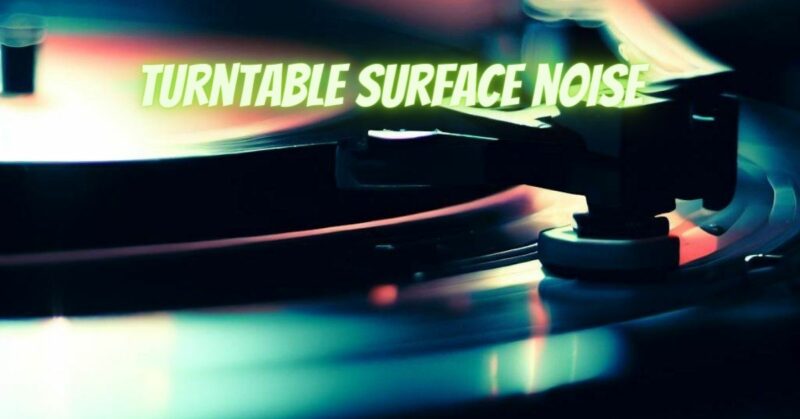Surface noise can be an annoyance for vinyl enthusiasts, as it detracts from the pristine sound quality of records. While some degree of surface noise is inevitable due to the nature of analog playback, there are several measures you can take to minimize and address unwanted noise. In this article, we will explore practical tips and techniques to help reduce turntable surface noise, allowing you to enjoy a cleaner and more enjoyable listening experience.
- Keep Your Records Clean: Clean records are less likely to produce surface noise. Dust, dirt, and debris can accumulate in the grooves of records, leading to increased noise during playback. Regularly clean your vinyl records using a carbon fiber brush or record cleaning brush to remove surface particles. For more thorough cleaning, consider using a record cleaning machine or wet-cleaning methods following proper guidelines and using appropriate cleaning solutions.
- Maintain Your Turntable: Proper maintenance of your turntable can help minimize surface noise. Keep the turntable’s platter, tonearm, and stylus clean and free from dust and debris. Check and adjust the turntable’s tracking force and anti-skate settings to ensure accurate playback and reduce unnecessary friction or distortion that may contribute to surface noise.
- Check the Condition of Your Stylus: A worn or damaged stylus can introduce additional noise during playback. Regularly inspect the condition of your stylus and replace it when necessary. A worn stylus can cause excessive surface noise, distortion, and even damage to your records. Follow the manufacturer’s recommendations for stylus replacement intervals based on usage and general wear.
- Optimize Turntable Placement: Proper turntable placement can help reduce external vibrations that contribute to surface noise. Place your turntable on a stable surface, away from sources of vibration such as speakers or heavy foot traffic areas. Isolating the turntable using dedicated turntable isolation platforms or dampening feet can further minimize vibrations.
- Address Grounding Issues: Grounding issues can introduce unwanted noise into your turntable’s signal. Ensure that your turntable is properly grounded according to the manufacturer’s instructions. Check the grounding connections and cables to ensure they are secure and free from interference. Consider using a dedicated ground wire or grounding box if necessary.
- Use Quality Components and Cables: Invest in high-quality components and cables to maintain signal integrity and minimize noise. This includes using quality phono cartridges, interconnect cables, and speaker cables. Poor-quality cables or connectors can introduce noise and interference, affecting the overall sound quality.
- Control Ambient Noise: Reduce ambient noise in your listening environment to enhance the overall listening experience. Minimize background noise sources such as fans, air conditioners, or other electronics. Consider using acoustic treatment in your listening room to reduce reflections and echoes that can interfere with the clarity of the sound.
- Adjust the Tracking Force: Ensure that the tracking force of your turntable is properly set according to the manufacturer’s recommendations for your cartridge. A misaligned or improperly set tracking force can lead to increased surface noise and groove wear. Use a tracking force gauge to accurately measure and adjust the tracking force as needed.
Conclusion:
While some surface noise is inherent in vinyl playback, there are steps you can take to minimize and address unwanted noise on your turntable. Keep your records clean, maintain your turntable and stylus, optimize turntable placement, address grounding issues, use quality components and cables, control ambient noise, and adjust the tracking force as necessary. By implementing these tips and techniques, you can significantly reduce surface noise and enjoy a cleaner, more immersive listening experience with your vinyl records.


